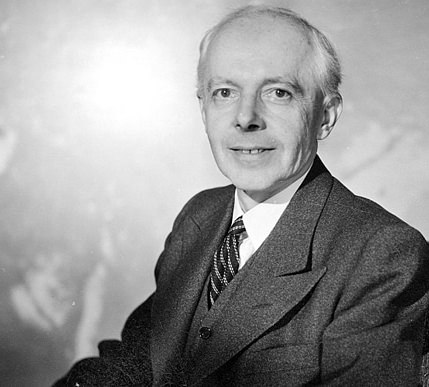
Somebody who is terribly important but whose name I have completely forgotten once remarked that counterpoint is among the main things that characterize Western classical music. I suspect it’s one of the least understood things too especially by non-musicians, perhaps because it rarely occurs in folk and popular music. At its most basic, counterpoint (from Latin, meaning “point against point”) is the process of combining two of more distinct melodic lines for an aesthetic effect. You can hear counterpoint in its simplest form in rounds like Frere Jacques or Three Blind Mice in which voices enter in sequence.
The art of using counterpoint emerged during the early Middle Ages and became the focal point of the polyphonic vocal music of the Renaissance when it reached its peak. This type of counterpoint was governed by various technical conventions and today is sometimes known as “strict” counterpoint. Its leading exponents were Josquin des Prez, Palestrina and Orlando di Lasso who often used complex melodic relationships in their florid music. In the baroque, counterpoint of a freer style flourished and dominated the music of the entire era. Even today, music composition students are required to study counterpoint in depth. They always were.
In 1725, a book called Gradus ad Parnassum was published by the Austrian composer and music theorist Johann Joseph Fux, whose name (you might be disappointed to know) is pronounced FOOKS. It was the first major study of counterpoint and focused on the Renaissance style as written by Palestrina. The book was held in high esteem by J. S. Bach; Mozart used it for his studies and Haydn worked his way through every lesson. Even Beethoven used it. So influential was the book that it’s still available today and essential reading for advanced composition students.
The essence of counterpoint is something deeper than merely manipulating notes. It is an inner part of the music and an essential ingredient of its expressive qualities. You can find examples of counterpoint even in twentieth century music. Oddly enough, it’s one of the key features of traditional jazz. Both the works this week share a structural feature in that the Bartók quartet is in five movements instead of the usual four and the concerto is in four movements instead of the usual three.
Béla Bartók (1881-1945): String quartet No. 4 in C major. Quatuor Ebène (Duration: 27:05; Video: 480p HD)
Composed in 1928, the work has an arch-like structure in that the first movement is thematically related to the fifth and the second to the fourth. If you’re unfamiliar with the music of Bartók you might be surprised at the variety of extraordinary sounds that the players produce. Many of them are made by “extended instrumental techniques” which are heard relatively rarely in the concert hall. They include glissandi, in which the player slides from one note to another, notes played without vibrato and the so-called “Bartók pizzicato” in which the player plucks the string with sufficient aggression that it rebounds against the fingerboard giving a sharp percussive “thwack”.
This quartet is rooted firmly in the twentieth century yet it uses many contrapuntal passages in which instruments pass melodic and rhythmic fragments between each other. The first movement is splendidly percussive and the second uses muted strings throughout. The third is a typical example of Bartók’s “night music” style which contains eerie dissonances, strange nocturnal sounds, odd twittering and sometimes fragments of folk melody. Clashing chords open the intensely rhythmic last movement which takes on the character of a wild Hungarian folk dance.
Dmitri Shostakovich (1906-1975): Violin Concerto No. 1 in A minor, Op 77. Vadim Repin (vln), Orchestre de Paris cond. Paavo Järvi (Duration: 39:16; Video: 720p HD)
This concerto, by one of the major composers of the twentieth century was written during 1947 and 1948. In this extensive work, counterpoint dominates from the beginning, when the woodwind phrases and the solo violin play fragments of the theme over an ominous, slowly moving bass line. There’s a sense of organic growth as the brooding music intensifies. In contrast, the second movement is a wild demonic dance which seems to have its origins in Russian folk music.
The third movement (at 20:52) is the great Passacaglia, a musical form that originated in early seventeenth-century Spain and is characterized by a repeated melody in the bass. This highly contrapuntal movement has great depth, power and passion and it develops into an exceptionally long cadenza of staggering virtuosity which leads seamlessly and dramatically (at 34:33) into the frenetic finale.
I first heard this work as a teenager in the Old Country. It was a performance by David Oistrakh with the Leningrad Philharmonic conducted by Gennadi Rozhdestvensky. Even on a black-and-white television with a tiny screen and feeble sound, it was nonetheless a thrilling experience.
 |
 |
 |





